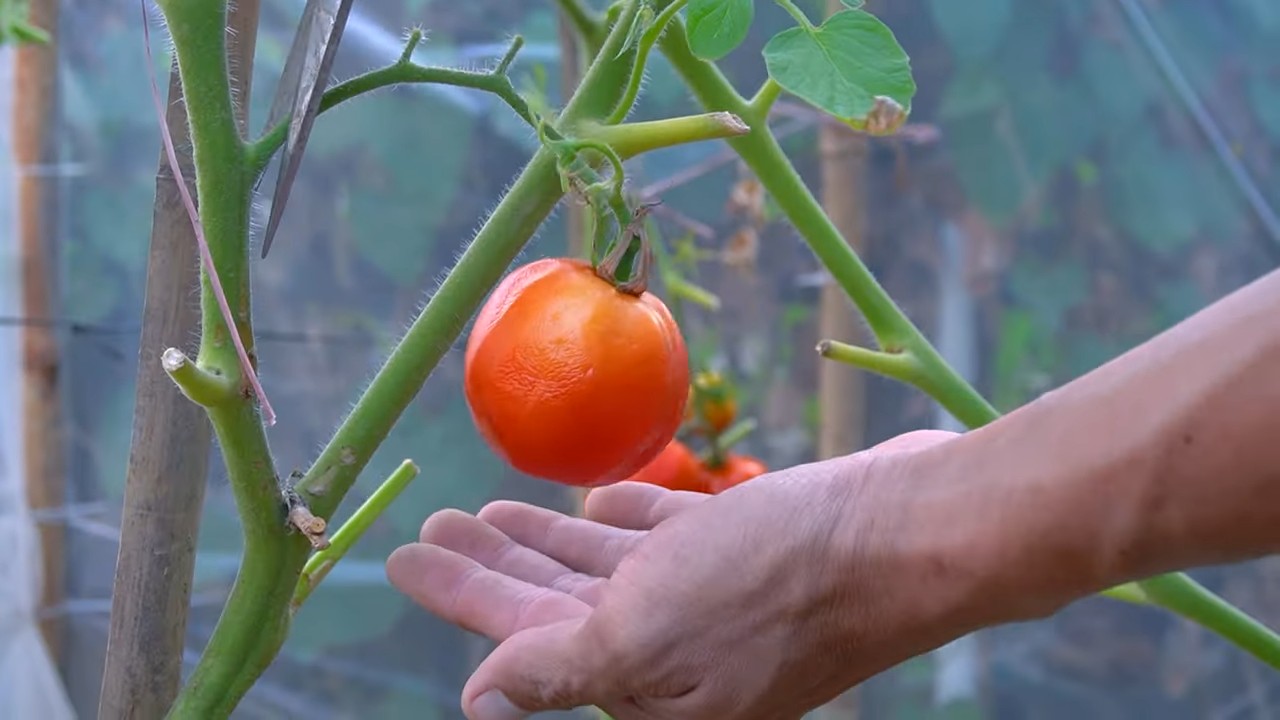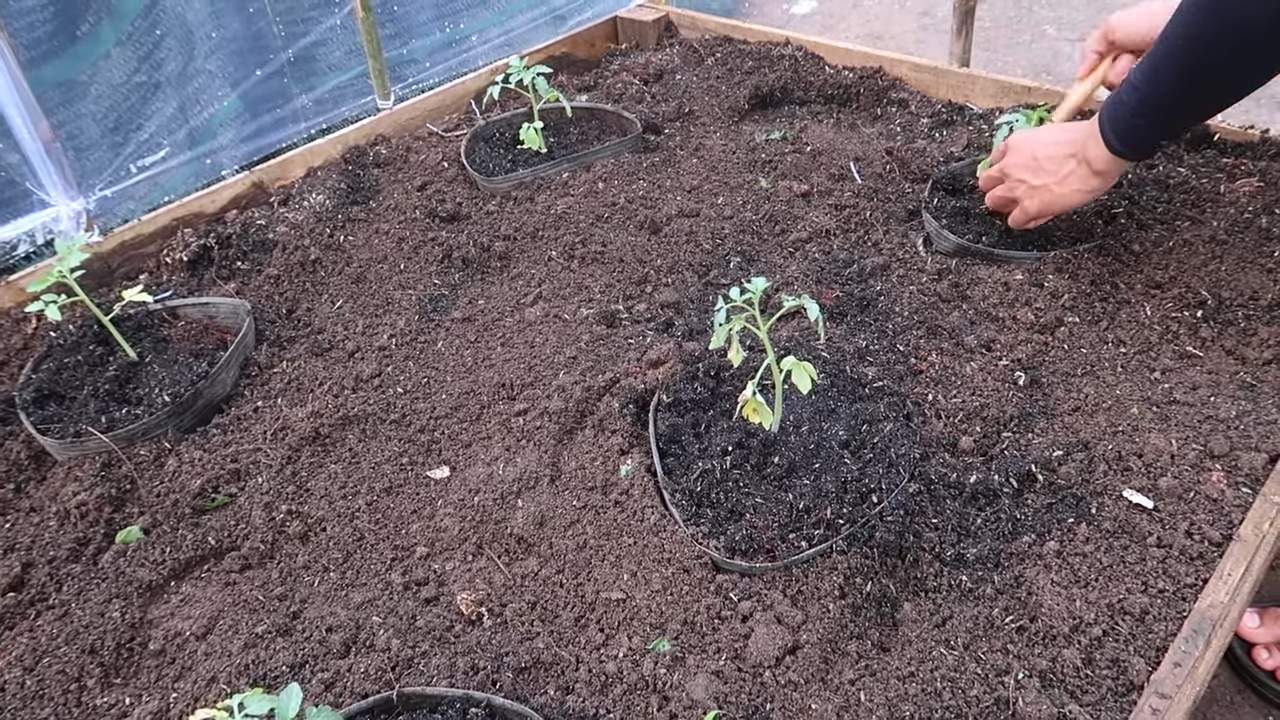Grow Long Beans at Home and unlock the secrets to a bountiful harvest right in your backyard! Imagine stepping outside and picking fresh, vibrant long beans, knowing you nurtured them from tiny seeds to impressive, yard-long wonders. Forget those bland, overpriced beans from the grocery store; with a few simple tricks and a little DIY spirit, you can cultivate your own supply of these delicious and nutritious vegetables.
Long beans, also known as yardlong beans or asparagus beans, have a rich history, particularly in Asian cuisine. They’ve been a staple in gardens and kitchens for centuries, prized for their unique texture and ability to add a delightful crunch to stir-fries, salads, and curries. I’ve always been fascinated by how these slender legumes can thrive with just a bit of care and attention.
But why should you bother with growing your own? Well, for starters, it’s incredibly rewarding! There’s nothing quite like the satisfaction of harvesting something you’ve grown yourself. Plus, grow long beans at home allows you to control the quality of your food, ensuring it’s free from harmful pesticides and packed with flavor. In today’s world, where we’re all looking for ways to be more self-sufficient and connect with nature, this DIY project is the perfect solution. So, let’s dive in and discover the easy-to-follow steps that will have you enjoying a plentiful harvest of long beans in no time!

Lange Bohnen zu Hause anbauen: Dein DIY-Leitfaden für eine reiche Ernte
Hey Gartenfreunde! Lange Bohnen, auch bekannt als Spargelbohnen oder Yardlong Beans, sind nicht nur super lecker, sondern auch ein echter Hingucker im Garten. Sie wachsen schnell, sind relativ pflegeleicht und bringen eine beeindruckende Ernte. Ich zeige dir, wie du diese faszinierenden Pflanzen ganz einfach selbst anbauen kannst. Los geht’s!
Was du brauchst: Die Materialliste
Bevor wir loslegen, hier eine Liste mit allem, was du für den Anbau von Langen Bohnen benötigst:
* Samen von Langen Bohnen: Wähle eine Sorte, die dir gefällt. Es gibt verschiedene Varianten, die sich in Farbe und Länge unterscheiden.
* Anzuchttöpfe oder Eierkartons: Für die Voranzucht im Haus.
* Anzuchterde: Spezielle Erde für die Anzucht, die nährstoffarm und locker ist.
* Gartenerde: Für das Beet oder den Kübel, in dem die Bohnen später wachsen sollen.
* Kompost oder organischer Dünger: Um den Boden anzureichern.
* Pflanzstäbe oder Rankhilfe: Lange Bohnen brauchen etwas zum Klettern.
* Gießkanne oder Gartenschlauch: Für die Bewässerung.
* Gartenschere: Für das Ernten.
* Etiketten und Stift: Um die Sorten zu kennzeichnen (optional).
Phase 1: Die Voranzucht (optional, aber empfehlenswert)
Die Voranzucht im Haus gibt deinen Langen Bohnen einen kleinen Vorsprung, besonders wenn du in einer Region mit kürzeren Sommern wohnst.
1. Die Töpfe vorbereiten: Fülle deine Anzuchttöpfe oder Eierkartons mit Anzuchterde. Drücke die Erde leicht an.
2. Die Samen säen: Lege in jeden Topf 1-2 Samen, etwa 2-3 cm tief. Bedecke die Samen mit Erde und gieße sie vorsichtig an.
3. Der richtige Standort: Stelle die Töpfe an einen warmen, hellen Ort. Eine Fensterbank ist ideal. Die ideale Keimtemperatur liegt zwischen 20 und 25 Grad Celsius.
4. Feuchtigkeit bewahren: Halte die Erde feucht, aber nicht nass. Besprühe sie regelmäßig mit einer Sprühflasche.
5. Geduld haben: Nach etwa 7-14 Tagen sollten die ersten Keimlinge zu sehen sein.
Phase 2: Die Vorbereitung des Beets oder Kübels
Lange Bohnen brauchen einen sonnigen Standort und einen gut vorbereiteten Boden.
1. Der richtige Standort: Wähle einen sonnigen Platz in deinem Garten oder auf deinem Balkon. Lange Bohnen brauchen mindestens 6 Stunden Sonne pro Tag.
2. Den Boden vorbereiten: Lockere den Boden gründlich auf und entferne Unkraut. Mische Kompost oder organischen Dünger unter die Erde, um sie mit Nährstoffen anzureichern. Lange Bohnen bevorzugen einen lockeren, humusreichen Boden.
3. Die Rankhilfe installieren: Lange Bohnen sind Kletterpflanzen und brauchen eine Rankhilfe. Du kannst Pflanzstäbe, ein Rankgitter oder ein Spalier verwenden. Stelle sicher, dass die Rankhilfe stabil ist und den wachsenden Bohnen Halt bietet. Ich persönlich mag es, ein Tipi aus Bambusstöcken zu bauen – das sieht nicht nur gut aus, sondern ist auch sehr stabil.
4. Abstand halten: Wenn du mehrere Pflanzen setzt, achte auf einen Abstand von etwa 30-40 cm zwischen den Pflanzen und 60-80 cm zwischen den Reihen.
Phase 3: Das Auspflanzen der Jungpflanzen oder die Direktsaat
Sobald die Jungpflanzen kräftig genug sind oder die Gefahr von Frost vorüber ist, können sie ins Freie. Alternativ kannst du die Samen auch direkt ins Beet säen.
1. Die Jungpflanzen abhärten: Wenn du die Bohnen vorgezogen hast, gewöhne sie langsam an die Bedingungen im Freien. Stelle sie für ein paar Tage tagsüber ins Freie und hole sie nachts wieder herein.
2. Das Auspflanzen: Grabe kleine Löcher im vorbereiteten Beet oder Kübel. Setze die Jungpflanzen vorsichtig ein und bedecke die Wurzeln mit Erde. Gieße die Pflanzen gut an.
3. Die Direktsaat: Wenn du die Samen direkt ins Beet säst, lege sie etwa 3-4 cm tief in die Erde. Achte auf den richtigen Abstand zwischen den Samen. Gieße die Erde gut an.
4. Schutz vor Schädlingen: Junge Bohnenpflanzen sind anfällig für Schnecken. Schütze sie mit Schneckenkorn oder anderen geeigneten Maßnahmen.
Phase 4: Die Pflege der Langen Bohnen
Lange Bohnen sind relativ pflegeleicht, aber ein paar Dinge solltest du beachten.
1. Regelmäßiges Gießen: Halte die Erde feucht, besonders während der Blütezeit und der Fruchtbildung. Gieße am besten morgens oder abends, um Verdunstung zu vermeiden. Vermeide Staunässe.
2. Düngen: Dünge die Bohnen regelmäßig mit einem organischen Dünger oder Kompost. Vermeide stickstoffhaltige Dünger, da diese das Wachstum der Blätter fördern, aber die Fruchtbildung hemmen können.
3. Unkraut entfernen: Halte das Beet sauber von Unkraut, um die Nährstoffversorgung der Bohnen zu gewährleisten.
4. Anbinden: Hilf den Bohnen beim Klettern, indem du sie an der Rankhilfe anbindest.
5. Ausgeizen: Entferne Seitentriebe, um die Fruchtbildung zu fördern.
6. Schädlinge und Krankheiten: Achte auf Schädlinge wie Blattläuse oder Bohnenfliegen. Bekämpfe sie bei Bedarf mit natürlichen Mitteln. Lange Bohnen können auch von Pilzkrankheiten befallen werden. Sorge für eine gute Belüftung und vermeide Staunässe, um Krankheiten vorzubeugen.
Phase 5: Die Ernte
Das Wichtigste: Die Ernte! Lange Bohnen wachsen schnell, und schon bald kannst du deine erste Ernte einfahren.
1. Der richtige Zeitpunkt: Ernte die Bohnen, wenn sie noch jung und zart sind. Sie sollten etwa 30-40 cm lang sein und sich leicht biegen lassen. Wenn sie zu dick werden, werden sie zäh und faserig.
2. Die Erntetechnik: Schneide die Bohnen mit einer Gartenschere ab. Achte darauf, die Pflanze nicht zu beschädigen.
3. Regelmäßige Ernte: Ernte die Bohnen regelmäßig, um die Produktion neuer Früchte anzuregen.
4. Lagerung: Lange Bohnen sind nicht lange haltbar. Am besten verarbeitest du sie sofort nach der Ernte. Du kannst sie aber auch für ein paar Tage im Kühlschrank aufbewahren oder einfrieren.
Zusätzliche Tipps und Tricks
* Fruchtfolge beachten: Pflanze Lange Bohnen nicht jedes Jahr am selben Standort, um Krankheiten vorzubeugen.
* Mischkultur: Lange Bohnen vertragen sich gut mit anderen Gemüsesorten wie Karotten, Gurken oder Salat.
* Samen gewinnen: Wenn du Samen für das nächste Jahr gewinnen möchtest, lasse ein paar Bohnen an der Pflanze ausreifen. Die Samen sind reif, wenn die Hülsen trocken und braun sind.
* Bodenverbesserung: Nach der Ernte kannst du die Bohnenpflanzen als Gründüngung verwenden. Schneide sie ab und lasse sie auf dem Beet liegen. Sie zersetzen sich und verbessern die Bodenqualität.
Ich hoffe, dieser Leitfaden hilft dir dabei, erfolgreich Lange Bohnen in deinem eigenen Garten anzubauen. Mit ein wenig Geduld und Pflege wirst du bald eine reiche Ernte einfahren können. Viel Spaß beim Gärtnern!

Conclusion
So, there you have it! Growing long beans at home is not only achievable, but it’s also incredibly rewarding. Imagine stepping out into your garden and harvesting fresh, crisp long beans whenever you need them. No more trips to the grocery store, no more wondering about the freshness or origin of your produce. You’ll have complete control over the entire process, from seed to table.
This DIY trick is a must-try for several compelling reasons. First and foremost, it allows you to enjoy the unparalleled flavor of homegrown vegetables. Store-bought long beans simply can’t compare to the vibrant taste and satisfying crunch of those you’ve nurtured yourself. Secondly, it’s a fantastic way to connect with nature and experience the joy of gardening. There’s something deeply fulfilling about watching a tiny seed sprout and transform into a bountiful plant.
Furthermore, growing your own long beans is a sustainable and eco-friendly choice. You’ll reduce your carbon footprint by eliminating transportation and packaging, and you can avoid the use of harmful pesticides and herbicides. Plus, it’s a budget-friendly way to add nutritious vegetables to your diet.
Don’t be afraid to experiment with different varieties of long beans to find your favorites. Some popular options include the classic yardlong bean, the vibrant red noodle bean, and the flavorful asparagus bean. You can also try different growing methods, such as vertical gardening or container gardening, to maximize your space and create a visually appealing display. Consider companion planting with herbs like basil or marigolds to deter pests and enhance the flavor of your long beans.
Ready to embark on your long bean growing adventure? We encourage you to give this DIY trick a try and experience the satisfaction of harvesting your own delicious, homegrown long beans. Remember to start with good quality seeds, provide adequate support for the vines, and water regularly. With a little patience and care, you’ll be enjoying a bountiful harvest in no time.
We’re confident that you’ll find this DIY project to be both enjoyable and rewarding. But don’t just take our word for it! We want to hear about your experiences. Share your photos, tips, and stories in the comments below. Let’s create a community of long bean enthusiasts and inspire others to grow their own food. What are you waiting for? Get your hands dirty and start growing long beans at home today!
Frequently Asked Questions (FAQ)
What is the best time of year to plant long beans?
The ideal time to plant long beans is during the warm season, after the last frost. Long beans thrive in temperatures between 70°F and 85°F (21°C and 29°C). In most regions, this typically falls between late spring and early summer. However, if you live in a warmer climate with a longer growing season, you may be able to plant long beans earlier in the spring or even in the late summer for a fall harvest. Check your local weather forecasts and planting guides to determine the best time to plant in your specific area. Remember that long beans are sensitive to frost, so it’s crucial to avoid planting them too early in the season.
How much sunlight do long beans need?
Long beans require at least 6-8 hours of direct sunlight per day to thrive. Sunlight is essential for photosynthesis, the process by which plants convert light energy into chemical energy for growth and development. Insufficient sunlight can lead to stunted growth, reduced yields, and pale or weak plants. Choose a planting location that receives ample sunlight throughout the day. If you’re growing long beans in containers, you can move them around to ensure they get enough sunlight. If you live in a particularly hot climate, providing some afternoon shade can help prevent the plants from overheating.
What kind of soil is best for growing long beans?
Long beans prefer well-drained, fertile soil that is rich in organic matter. The ideal soil pH is between 6.0 and 7.0. Before planting, amend the soil with compost, aged manure, or other organic materials to improve its fertility and drainage. Avoid heavy clay soils, as they can become waterlogged and inhibit root growth. If you have clay soil, you can improve its drainage by adding sand and organic matter. You can also grow long beans in raised beds or containers filled with a high-quality potting mix. Ensure the soil is loose and well-aerated to allow for proper root development.
How often should I water long beans?
Long beans need consistent moisture, especially during hot and dry weather. Water deeply and regularly, aiming to keep the soil consistently moist but not waterlogged. The frequency of watering will depend on factors such as the weather, soil type, and plant size. Check the soil moisture regularly by sticking your finger into the soil about an inch deep. If the soil feels dry, it’s time to water. Avoid overhead watering, as this can promote fungal diseases. Instead, water at the base of the plants using a soaker hose or drip irrigation system. Mulching around the plants can also help retain moisture and suppress weeds.
Do long beans need support?
Yes, long beans are climbing plants and require support to grow properly. Without support, the vines will sprawl along the ground, making them more susceptible to pests and diseases. Provide a trellis, fence, or other sturdy structure for the vines to climb on. The support should be at least 6-8 feet tall to accommodate the long bean’s vigorous growth. You can also use bamboo stakes or netting to create a support system. Train the vines to climb the support by gently guiding them and tying them loosely with twine or plant ties.
How long does it take for long beans to mature?
Long beans typically take 60-80 days to mature after planting. However, the exact time will depend on the variety, growing conditions, and climate. You can start harvesting long beans when they are about 12-18 inches long and still tender. Regular harvesting will encourage the plants to produce more beans. Check the plants frequently for mature beans and harvest them promptly to prevent them from becoming tough and stringy.
What are some common pests and diseases that affect long beans?
Long beans can be susceptible to various pests and diseases, including aphids, bean beetles, spider mites, powdery mildew, and bean rust. Regularly inspect your plants for signs of pests or diseases. If you detect any problems, take action promptly to prevent them from spreading. You can use organic pest control methods, such as insecticidal soap or neem oil, to control aphids, bean beetles, and spider mites. To prevent fungal diseases, ensure good air circulation around the plants and avoid overhead watering. Remove any infected leaves or plants to prevent the disease from spreading.
Can I grow long beans in containers?
Yes, you can successfully grow long beans in containers, provided you choose a large enough container and provide adequate support. Select a container that is at least 12 inches in diameter and 12 inches deep. Fill the container with a high-quality potting mix that is well-draining and rich in organic matter. Provide a trellis or other support for the vines to climb on. Water regularly and fertilize every few weeks with a balanced fertilizer. Place the container in a location that receives at least 6-8 hours of direct sunlight per day. Container-grown long beans may require more frequent watering and fertilization than those grown in the ground.




Leave a Comment